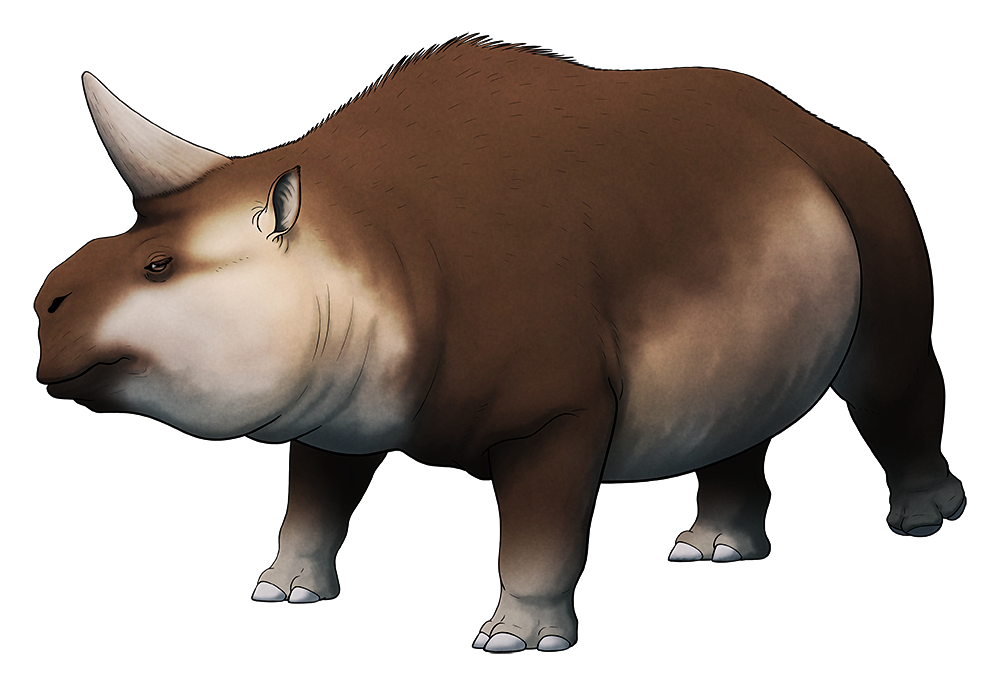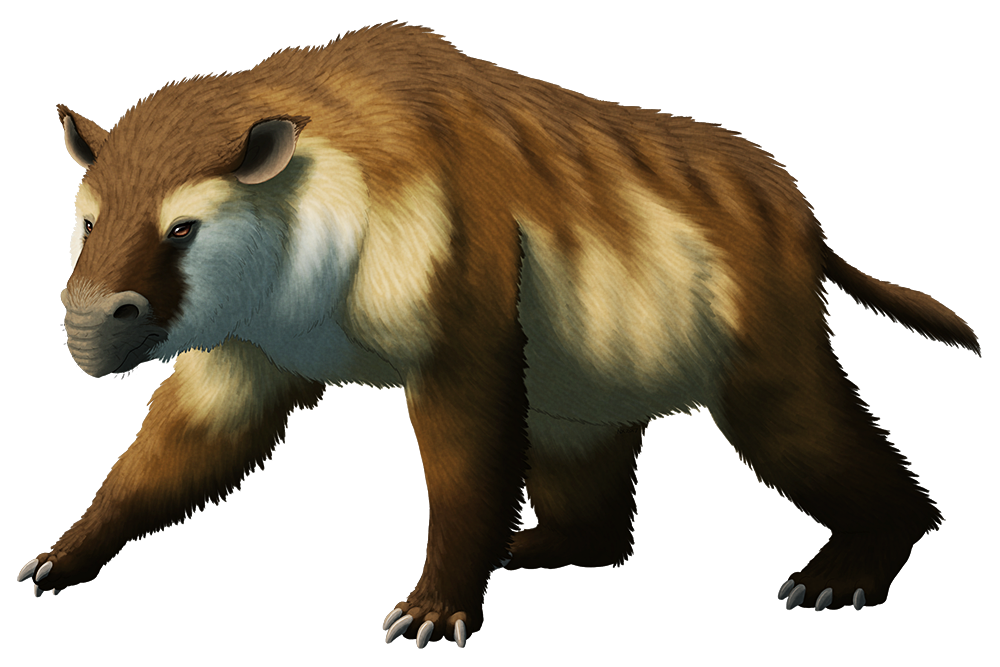South America was an isolated “island continent” for a large chunk of the Cenozoic, and during that time it was home to a unique mix of species evolving completely separately to the rest of the world.
One group found there were the meridiungulates, a lineage of hoofed mammals related to modern horses, rhinos, and tapirs. Many of them convergently evolved to resemble other types of mammals, and the large rhino-like toxodontids were some of the most common and successful.
And, like rhinos, some of them may even have had horns.
Hoffstetterius imperator lived in Bolivia during the late Miocene, about 11-5 million years ago. Standing around 1.6m tall at the shoulder (5’3″), it had a particularly oddly-shaped skull, with a deep downward-flaring lower jaw and a large bulging bony “shield” on its forehead that resembles the attachment points for horns on rhino skulls.
Keratinous structures like that only fossilize very rarely, so the actual size and shape of whatever attached there is unknown – the pointed horn shown here is one possibility – but we honestly don’t know what was going on with these guys’ heads.



